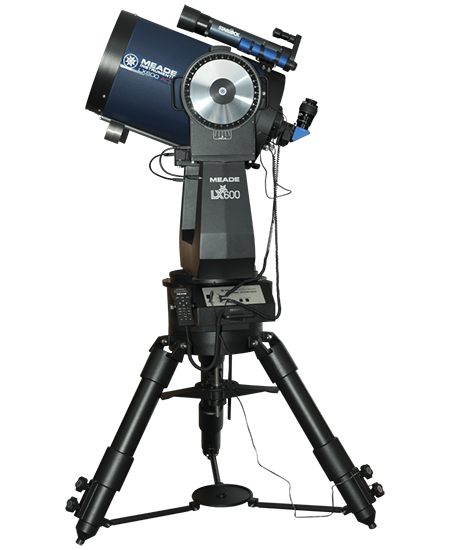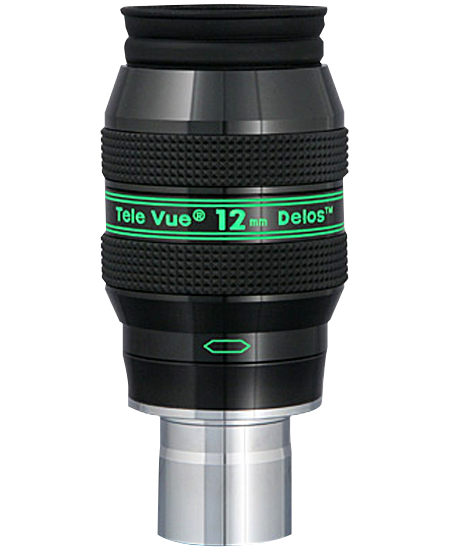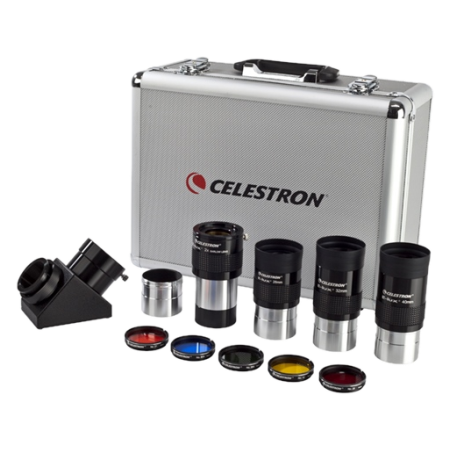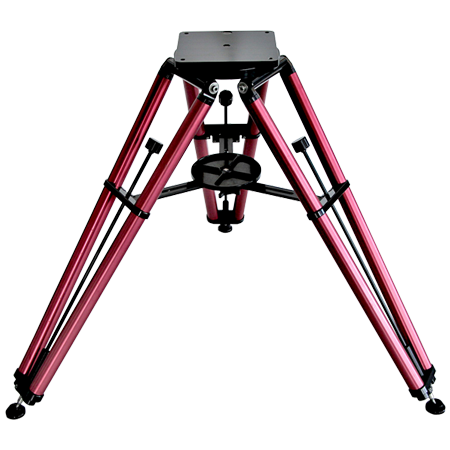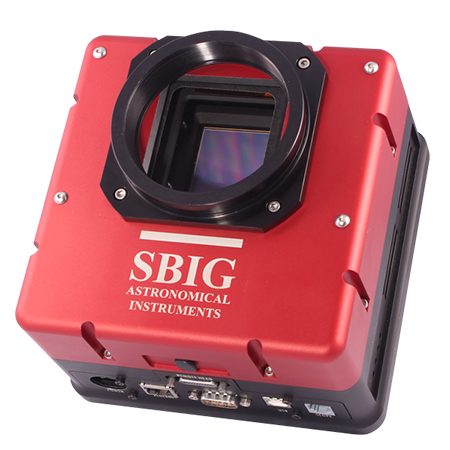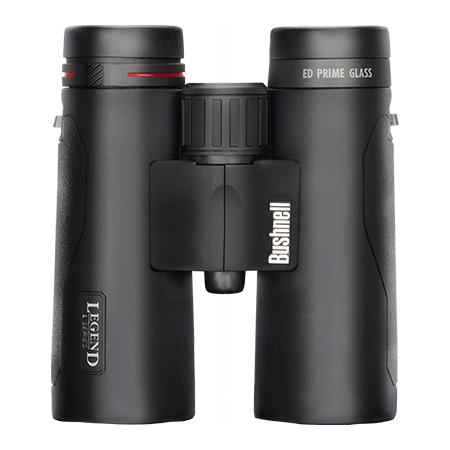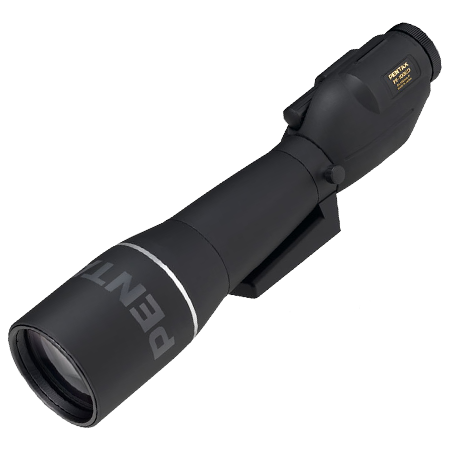Product Description
This Astro-Tech ED refractor has:
• 72mm f/6 fully multicoated FPL-53 and Lanthanum doublet refractor optics
• dual-speed Rack and Pinion 2” focuser with 10:1 ratio fine focusing and built in Camera Angle Adjuster (Same mechanism as our EDT series)
• 2” and 1.25” non-marring compression ring accessory holders
• Vixen dovetail plate with two tube rings
• retractable self-storing lens shade
• amazing wide field astrophotographic capabilities
• long-lasting white finish with powder-coated black focuser and red anodized trim
The AT72ED2 now comes standard with the finder shoe.
Astronomy magazine called this scope’s predecessor, the 66mm Astro-Tech AT66ED, “a product everyone should own.” The original AT72ED has proven to be a worthy upgrade over the AT66ED. Now we come to the next upgrade over the original AT72ED. The new Astro-Tech AT72EDII.
The major upgrades over the AT66ED and AT72ED come in the type of ED element and the type of foucser. The new AT72EDII has upgraded the ED element to FPL-53 with a Lathanum mating element. Our first star test on the prototype was simply textbook. A perfectly defined set of white diffraction rings with jet black spacing. The next upgrade comes with the 2" Rack and Pinion focuser with 10:1 fine focus knob. It is the same mechanism as our EDT line and is buttery smooth. The focuser also comes with a built in Camera Angle Adjuster to help you get just the right position for your camera or diagonal. The final upgrade is something that people have asked us about for years. The AT72EDII now comes with split tube rings and a Vixen style dovetail, with a 1/4-20 thread adapter on the bottom, as standard equipment. Astronomy said the AT66ED was “a great grab-and-go scope, a fine little astrograph, a super-finder scope, and a daytime spotting scope.” The same is equally true for the new AT72EDII.
This 12” long refractor optical tube (15” long with the lens shade extended) has the right balance of aperture and focal length to use as a low-power rich field telescope, as a medium-power planetary telescope, or as any kind of telescope in between. In addition, optional camera adapters turn the AT72EDII into a superb 430mm (8.6x) f/6 daytime telephoto lens and nighttime wide-field astrograph. The supplied Vixen style dovetail fits directly into the dovetail slot, or will attache to any mount or tripod with a 1/4-20 thread screw, on the top of many altazimuth and German equatorial mounts, such as those from Astro-Tech, Celestron, Meade, and Vixen. The OTA weighs in at 4.15 pounds and 4.8 pounds with rings and dovetail.
Features of this Telescope . . .
AT72EDII doublet refractor optics: 72mm (2.83”) aperture, 430mm focal length, f/6 focal ratio air-spaced doublet lens using premium ED glass, including an FPL-53 ED (Extra-low Dispersion glass) with a Lanthanum mating element to reduce spurious color halos and fringing to vanishingly low levels. While we do not claim fully apochromatic performance in the class of a multiple thousand dollar Takahashi, Astro-Physics, or TMB refractor, the AT72ED is so free from spurious color as to be virtually indistinguishable from an apochromatic system. And, as Mr. Spock probably said in one episode of Star Trek or another, “Any difference that makes no difference, is no difference.”
Multicoated optics: The objective lens has the latest state-of-the-art broadband antireflection multicoatings on all four air-to-glass surfaces for high light transmission and excellent contrast. This can easily be seen by looking into the objective lens of the scope. Virtually no reflection of your face will be seen. It’s a sure sign that the high transmission coatings are doing their job, by letting virtually all the light enter the scope, rather than reflecting some light back to your eye.
Internal light baffles: There are two contrast-enhancing knife edge baffles inside the optical tube, and 15 Micro Baffles running the full length of the focuser drawtube, for truly dark sky backgrounds and high terrestrial contrast. In addition, the edges of the objective lens are blackened to eliminate contrast-reducing stray internal reflections.
Full power range capability: The “highest useful magnification” listed above right is 143x. This is the power obtained with a 3mm eyepiece, which provides an exit pupil of 0.5mm (about 1/50th of an inch) and 51x per inch of aperture. This is generally the smallest exit pupil recommended with any telescope before the images start to become too dim to be consistently useful.
Higher powers are possible for lunar and planetary observing, however, given excellent seeing conditions, although the increasing dimness of the image will start to limit the performance on all but the brightest objects.
The lowest useful power is 11x, achieved with a 40mm eyepiece (a 40mm 1.25” TeleVue Plössl will give you a 4.2° field at that power). At 3.8x per inch of aperture, this is very close to the 4x per inch of aperture generally regarded as the lowest practical power with any telescope. A 40mm eyepiece on the AT72EDII will give you a 6.67mm exit pupil, larger than most eyes can dilate. Any lower power would simply waste some of the scope’s light gathering capacity, as its collected light would fall on your iris, rather than entering your eye.
Dew shield: A self-storing retractable dew shield slows the formation of dew on the lens in cold weather to extend your undisturbed observing time. It also improves the contrast, similar to the effect of the lens shade on a camera lens, when observing during the day or when there is excessive ambient light at night, such as a neighbor’s backyard security light.
Dual speed microfine 2” Rack and Pinion focuser with 1.25” adapter and a built in Camera Angle Adjuster: The precision-made 2” focuser has dual-speed focusing. There are two coarse focusing knobs. The right knob also has a smaller concentric knob with 10:1 ratio reduction gear microfine focusing. This provides exceptionally precise image control during high power visual observing or critical DSLR or CCD imaging. The focus knobs have knurled gripping surfaces so they are easy to operate, even while wearing gloves or mittens in cold weather. The 86mm (3.38”) travel focuser drawtube has a scale marked in 1mm increments so you can note individual focuser positions for easy return to the correct focus when switching between visual use and photography. A lock knob under the focuser lets you lock in your photographic focus.
The focuser drawtube terminates in a 2” compression ring accessory holder to accept a 2” star diagonal and 2” photo accessories.
The AT72EDII includes a nylon soft carry bag to help protect your scope on its travels to and from your observing field.
The supplied 1.25” accessory adapter slips onto the 2” accessory holder and uses a soft brass compression ring to hold 1.25” star diagonals and photo/visual accessories in place. The 1.25” and 2” compression rings won’t scratch the barrels of your star diagonal or accessories as an ordinary thumbscrew can.
Tube finish: The optical tube is finished in a white powder coat with red trim and a black powder-coated focuser.
Other supplied accessories: A slip-on metal dust cap is standard. Two threaded holes for installing a finderscope mounting bracket are located on the upper left and upper right side of the scope body.
Tech Details
| Aperture | 72mm |
|---|---|
| Focal Length | 430mm |
| Focal Ratio | f/6 |
| Heaviest Single Component | 4.15 pounds |
| Weight | 4.8 pounds |
| Optical Coatings | Fully Multi-Coated |
| Telescope Type | Refractor |
| Warranty | 1 year |
Reviews
I have observed up to 300x with this scope. Saturn shows the slightest bit of chromatic aberration around it. That is far beyond a practical power with this small of an aperture, but the image was still quite good, albeit dim. The Moon and Jupiter show striking detail. Compared to a 80mm f/5 achromat, this refractor completely blows it out of the water.
I do have two minor complaints about the mechanics.
1. The dew shield, fully extended, has a bit of play in its movement.
2. Locking the Camera Angle Adjuster causes the eyepiece/camera to rotate slightly.
Both of these are quite minor and do not affect the performance in a major way.
This refractor is also excellent as a travel refractor. I can fit it, along with a 90 degree diagonal, 4 eyepieces, and a finder into an Apache 3800 case.
Overall, this refractor receives my highest recommendation.
You won't be disappointed. (Posted on 9/17/2023)
I use this with a small manual mount visually for grab and go. It's a bit back heavy so I have this scope configured with a longer dovetail for balancing. The ergonomics with this scope and a observing chair is great. I get 5 degree views with an AT28mm 82 degree eyepiece - no finder is needed for this scope. It's really nice under dark skies for just scanning thru the milky way. It does a nice job on the moon and planets for quick views of the sky.
I was impressed enough with the AT72EDii that I later purchased an AT115EDT. Both have been surprising workhorses for my EAA and visual viewing habits. (Posted on 3/14/2023)
I took it out for a spin using 16, 25, and 86x. In each case I was amazed. The contrast was sharp. Pinpoint stars in very rich star fields was impressive. From Lunar, planet to star splitting, this little scope performed well beyond expectations. It is a fantastic instrument for visual astronomy. I had a friend whose daughter has an interest in visual astronomy. He asked me what telescope would be right for her. He wanted to give her a great small refractor. Based on my experience, I immediately recommended the AT72EDII. This telescope should be in any astronomer's collection. It can be a fun scope, or a dedicated scope for photography. Above all - it packs a serious punch. (Posted on 8/28/2021)
As for a rank beginner using this for imaging, I'd like to think that it's working like a champ. This is the second image that I've ever taken and I could not be happier with the results. This was unguided since I'm still trying to understand how all of these things work together: https://www.cloudynights.com/uploads/gallery/album_13134/gallery_243219_13134_3957767.jpg
It's a fantastic small and portable scope that I would happily recommend to anyone. (Posted on 6/22/2020)
https://www.cloudynights.com/topic/700129-tonights-moon-brought-to-you-by-the-at72edii/
Note: there were 0 pixels with CA in this image and sharpness of the moon's features gives an almost 3-d effect.
Here are several thousand more words about this scope:
https://www.cloudynights.com/topic/691258-first-light-with-at72edii/
The AT72EDII definitely is a winner. (Posted on 4/3/2020)
I took it out and mounted it on my SkyGuider Pro with an ASI183MM-Pro and a 5 filter filter wheel and shot M42 in RGB with it. I don't have the flattener/reducer on it yet, since it's on back order. It was only a test. Unguided, 20 sec subs in each color and processed quickly in PI. Here's what I got from my urban back yard with a Bortle of about 6.
https://drive.google.com/open?id=11NoctN2syG98U76zsohSYqQJO7IS4Wd8
I'm anxiously awaiting the flattener/reducer since I would like a slightly wider FOV and there is just a hint of stars stretching on the outer edges of the frame. The image linked was only cropped slightly to get rid of the stacking edges. Colors line up real well but not absolute perfection; pretty nice, though, for the price range.
I also want to add that I love the focuser. Very smooth and solid.
I don't know what's going to change with the flattener/reducer, but out of the box, you need to get your imaging plane about 45mm off the back of the focuser to get into focus and you'll have the focuser racked pretty close to all the way out. With my ASI183 and the EFW in there, I've got 25mm of spacers screwed on to my 2" adapter going into the scope in front of the filter wheel and I've got about 10mm of travel left on the focuser before it's racked all the way out.
Love the scope overall and would recommend it to anyone looking for a light-weight rig that will get nice images. (Posted on 1/26/2020)
The AT72EDII is a wide-field scope, and is best suited for larger Deep Space Objects, such as the Great Orion Nebula, the Heart Nebula, the Soul Nebula, the Andromeda Galaxy, etc. Obtaining details on smaller objects, such as planets, planetary nebulae and distant galaxies, is a little more challenging. It is, however, well suite for wide-field imaging of groups of galaxies, such as Markarian's Chain in the Virgo Cluster. There are plenty of targets to keep one busy year-round for many years.
The scope's small size and light weight make it suitable for a wide range of relatively inexpensive mounts. I have used it on an old Vixen Super Polaris and a Sky-Watch EQ6-R Pro mount.
The focuser is smooth and solid and handles my Canon DLSR well. The The rings are solid and stable. The build quality and paint job are top-notch. The anti-glare coatings on the lenses, light baffles, and internal coating seem to practically eliminate reflections. The image contrast is excellent.
Given its price, build quality, imaging quality, and features, I highly recommend this scope. (Posted on 10/31/2019)
To be fair, the original production run hadn't arrived, and I managed to talk Mike into selling me the prototype since I was going back to South Africa before the shipment was to arrive . So I did side-by-side comparisons to the MKI - this is optically superior. The 53 glass makes a significant difference. I miss the rotating focuser, but that's a tradeoff. This one is also just about perfect. I would be curious to have it tested to see the strehl - it's a perfect star-test.
I've also done side-by-side shoot-outs against the old TeleVue Pronto 70mm. NO CONTEST. The AT72EDII blew it away. It's amazing how hard I can push this little scope. Visually, an Explore Scientific 5x focal extender pushes it to the limit...the image holds up to 100x per inch of aperture - superb. Photographically an amazing performer. I have the field flattener for full frame, but love just using this without using a smaller apc-c sensor.
If you only have ONE telescope...this is the one to have. I keep it in the trunk of my car along with an IOptron SmartEQ+ with a carbon fiber tripod. Perfect combo to travel with!
(Posted on 8/1/2019)
Good quality through out. Thanks Astronomics! (Posted on 12/31/2018)
I would recommend this to anyone that is on a budget for AP use, and for a lightweight mount such as the AVX (Posted on 12/20/2018)
In addition, I got great customer service from AT when I dropped my scope and broke the focuser. They replaced it and checked out the scope at no charge. Amazing. (Posted on 11/3/2018)
My favorite part of this scope is the focuser. It’s so fine and keeps focus even after several imaging sessions over many days. (Posted on 10/6/2018)


